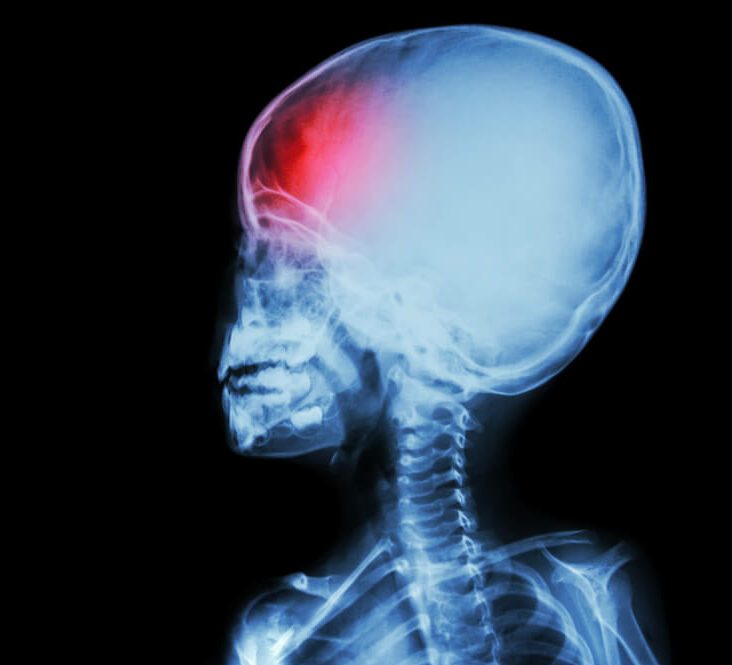Birth Injury Attorneys in New Jersey
Welcoming a newborn into your life brings many parents sheer joy. Even though many births take place without any significant complications, there may be times when there is an injury during the delivery process. A birth injury involves an event that took place during delivery that would compromise the infant’s normal function of the body.
Many parents do not know what to do when facing such a gloomy situation. Do not let a physician go unpunished for their mistake. If your child has experienced a birth injury, do not delay in contacting Varcadipane & Pinnisi, PC today to discuss your rights.
Parents feel powerless when dealing with birth injuries to their children, often wrestling with whether they need to accept their outcomes or possibly file legal claims. You should take the time to speak to a lawyer about your case so you can fully understand what might be done in your situation.

Common Types of Birth Injuries in New Jersey
Some birth injury statistics
According to a 2020 study performed by the Centers for Disease Control and Prevention (CDC), 5.4 babies died per 1,000 live births, with birth injuries being the fourth leading cause of infant mortality.
Birth injuries may stem from head trauma, nerve damage, and vacuum extraction or forceps-assisted complications.
The CDC also reports that birth defects affect one in every 33 babies or about 3% of all children.
Birth defects are also identified as being the leading cause of infant deaths, accounting for 20 percent of infant deaths. The CDC estimates that one in every 4,647 births will involve anencephaly and affect 847 babies, one in every 10,502 births will involve encephalocele and affect 375 children, and one in every 2,758 births will involve spina bifida and affect 1,427 babies.
The CDC also estimates that one in every 5,243 births, or 751 babies, can see defects such as anopthalmia or micropthalmia. When it comes to heart defects, the CDC says:
- One in every 1,859 births, or 2,118 children will suffer atrioventricular septal defects
- One in every 1,795 births or 2,194 babies will be dealing with coarctation of the aorta
- One in every 15,696 births or 251 babies will suffer from common truncus or truncus arteriosus, one in every 5,997 births or 656 children will have a double outlet right ventricle
- One in every 13,047 births or 302 babies will have Ebstein anomaly
- One in every 3,841 births or 1,025 children will suffer from hypoplastic left heart syndrome
- One in every 16,066 births or 245 babies will be dealing with interrupted aortic arch
- One in every 1,052 births or 3,742 children will suffer from pulmonary valve atresia and stenosis
- One in every 7,104 births or 554 babies will deal with pulmonary valve atresia
- One in every 13,351 births or 295 children will have a single ventricle
- One in every 2,171 births or 1,813 babies will suffer from tetralogy of Fallot
- One in every 7,809 births or 504 children will have total anomalous pulmonary venous connection
- One in every 2,695 births or 1,461 babies will suffer from a transposition of the great arteries
- One in every 3,413 births or 1,153 children will deal with dextro‐transposition of great arteries
- One in every 5,938 births or 663 babies deals with tricuspid valve atresia and stenosis
- One in every 9,751 births or 404 children suffer from tricuspid valve atresia.
The CDC says that when it comes to mouth or face defects:
- One in every 1,563 births or 2,518 babies suffer from cleft lips with cleft palates
- One in every 2,807 births or 1,402 children will deal with cleft lips without cleft palates
- One in every 1,687 births or 2,333 babies have cleft palates.
When it comes to stomach or intestine defects:
- One in every 4,144 births or 950 babies suffer from esophageal atresia/tracheoesophageal fistula
- One in every 2,242 births or 1,756 children will have rectal and large intestinal atresia/stenosis.
In terms of muscle and bone defects, the CDC says:
- One in every 593 births or 6,643 babies suffers from clubfoot
- One in every 3,591 births or 1,096 children deal with diaphragmatic hernia
- One in every 1,953 births or 2,015 babies have gastroschisis
- One in every 1,943 births or 2,026 children suffer from limb defects
- One in every 4,175 births or 943 children have omphalocele.
Chromosome and gene defects can include:
- One in every 7,409 births or 531 babies having Trisomy 13 (Patau syndrome)
- One in every 3,315 births or 1,187 children having Trisomy 18 (Edwards syndrome)
- One in every 707 births or 5,568 babies has Trisomy 21 (Down syndrome).
Types of Injuries
Head trauma: any damage taking place to the skull or brain during birth; often, it is the result of direct force on the head; this can result in brain bleeds (hemorrhage) and possible brain damage.
Nerve damage: could include a facial nerve, brachial plexus, phrenic nerve, or spinal cord, as follows:
- Facial nerve: pressure against this nerve would cause a newborn’s face to appear lopsided
- Brachial plexus: nerve bundle that includes the nerves between the neck and shoulder. which control the functioning of the arms and hands; during delivery, these nerves may be stretched, causing weakness or paralysis of the infant’s hand and arm.
- Phrenic nerve: this is the only nerve that controls the function of the diaphragm; damage to the phrenic nerve during delivery may result in the newborn having trouble breathing.
- Spinal cord injuries: extremely rare, however, damage to the spinal cord is often permanent.
Vacuum extraction complications or forceps-assisted delivery: both tools may be used to assist during a difficult childbirth, such as the baby being in an occiput posterior position (baby’s head is down and baby is descending birth canal “sunny side up”)
- Physicians may elect to use a vacuum extractor to create suction and use force to pull the baby out of the womb; this can lead to brain bleeding, skull fractures, and shoulder damage
- The same damage can be caused by using forceps, which are shaped like large tongs that fit around the baby’s head to assist in delivery.
Birth Injury Disorders
Each type of injury carries complications that can result in the following disorders, seek legal help from a New Jersey birth injury lawyer.

Cerebral Palsy
- Affects a child’s muscle control, often resulting in speech and developmental delays
- Generally caused by brain damage before or during difficult deliveries
- Can be caused by vacuum extraction or forceps-assisted deliveries
Erb’s Palsy
- Causes paralysis to a child’s hand, arm, or shoulder
- Caused by damage to the brachial plexus nerves during the birthing process
- Can be caused by vacuum extraction or forceps-assisted deliveries
Newborn Cephalohematoma
- Bleeding underneath the scalp; can lead to swelling of brain tissue, seizures, and even jaundice (damage to the liver)
- Can be caused by vaginal delivery since an infant’s head has to fit through a tight space
- The chances of a baby having the disorder increase with prolonged labor
Brachial Palsy
- Involves injuries to the nerves in the arms and hands (known as the brachial plexus)
- Often the result of delivering a baby’s shoulder or shoulder dystocia
- Children lose the ability to flex and rotate their arms
- Tearing of the nerves can cause permanent nerve damage
Caput Succedaneum
- Caput involves a significant swelling of soft tissues on a baby’s scalp
- Some babies have bruising in this area and swelling may go away in a matter of days without issues
- Babies delivered by vacuum extraction are more likely to suffer from this condition
Cephalohematoma
- Involves an area of bleeding between the skull and its fibrous covering
- Can appear several hours after birth as raised lumps on a baby’s head
- Cephalohematomas usually take two weeks to three months to disappear completely, but when the area of bleeding is large, some babies can develop jaundice as red blood cells break down
Hypoxic-Ischemic Encephalopathy (HIE)
- Brain damage results from decreased blood and oxygen levels in the brain
- HIE can destroy brain cells and tissue in the motor cortex, possibly causing cerebral palsy and periventricular leukomalacia
- HIE is the most common type of brain damage during childbirth
Periventricular leukomalacia (PVL)
- Involves white matter in the brain dying and causing a loss of brain tissue
- PVL results from a lack of blood flow to the periventricular part of the brain and can co-occur with bleeding
- Placental failure and infection may cause PVL
Intracranial Hemorrhage
- Essentially bleeding in the brain
- Common causes include fetal strokes from blocked or damaged blood vessels
- High blood pressure, placenta complications, and reproductive system infections in the mother can also cause an intracranial hemorrhage
- Common in premature infants
Intraventricular Hemorrhage
- A bleed in the brain’s ventricular system where spinal fluid is produced
- The most serious type of intracranial bleeding
- Most common in premature births and infants born with low birth weights
Subarachnoid Hemorrhage
- Bleeding occurs in the subarachnoid space, or the area between the arachnoid membrane and the covering that surrounds the brain
Cerebral Dysgenesis
- An abnormal development in the fetal brain
- Often occurs during pregnancy when the fetal brain is forming
- Direct injury to a baby’s head during or shortly after delivery can also cause cerebral dysgenesis
- Infections in the fetal brain can mutate genes responsible for motor function development
Down Syndrome
- Down’s syndrome is a chromosomal condition caused by the presence of an extra 21st chromosome
- Down’s syndrome is often associated with cognitive impairments and stunted growth as well as distinctive facial characteristics
- Physical disabilities resulting from Down’s syndrome could be minimal or may prevent a person from ever being able to hold a full-time job
Medical Negligence
Healthcare providers may be found accountable for birth injuries when they do not provide the standard of care that is expected of them. Medical professionals must be held responsible for their negligence.

Ways health providers exhibit negligence during labor and delivery:
- Failing to make a medical diagnosis of a mother or infant in a timely fashion
- Not using birthing tools (forceps and vacuum extractor) correctly
- Failing to monitor the mother or infant after delivery
- Failing to elect for cesarean (C-section) in cases where vaginal delivery is too risky
- Exhibiting too much force when pulling or twisting babies
- Failure to recognize a high-risk pregnancy, such as a breech position
- Failure to prevent and control tearing/hemorrhaging in the mother
- Failure to quickly diagnose and treat preterm labor
- Failure to monitor the baby’s heartbeat and detect fetal distress
- Failure to appropriately respond to bleeding
- Failure to perform an emergency cesarean section (C-section) when necessary
- Misuse of birthing tools during a vacuum or forceps delivery
- Failure to appropriately treat umbilical cord entrapment
- Failure to assess and treat fetal distress during delivery
- Delay in the ordering of a Caesarian section, i.e. C-section
- Misuse of vacuum extraction or forceps during delivery
- Inappropriate administration of labor-inducing drugs
All medical professionals should navigate difficult birthing situations and provide prompt medical treatment. When a mother or child is in some kind of danger, a doctor must act quickly to prevent possible harm or they could be deemed negligent.
Most birth injury cases will be medical malpractice cases, and people only have two years to file these claims with the dates of a person’s injuries or the date they became aware of the injuries being the starting point for the statute of limitations. The National Library of Medicine reported that a survey of specialty arthroplasty surgeons showed that over 70 percent of respondents were sued at least once for medical malpractice during their careers.
Who is responsible for a birth injury in New Jersey?
Childbirth is dangerous in the United States, and a team of medical professionals is in the room to ensure the safety of the mother and newborn. Each member of the team is vital to safe labor and delivery. Since there are so many professionals in the room, if one fails, it can cause injury, and they must be held responsible. Examples of parties who can make an error and harm the mother and newborn are:
- Doctors
- Midwives
- Hospitals
- Nurses
- Paramedics/EMTs
- Anesthesiologist
You will need to prove that the negligent actions of these parties were a breach of the standard of care in their specialty. Our New Jersey Birth Injury Lawyer is here to advocate on your behalf.
Our firm will be able to fully investigate your case and secure all of the evidence that will be necessary to prove your case in a court of law. We understand the increased difficulty involved in proving that medical professionals were negligent, but we also understand the most effective ways to handle these types of claims.
Why you should file a birth injury claim?
Monetary recovery does not erase what happened but provides a financial foundation for the future. For many families filing a birth injury claim also provides justice because the negligent party is paying you for the harm they caused. Your child will require accommodations for the rest of their life, and while you know that raising a child comes with some expenses, these were not in the plan, and you need compensation to circumvent them.

You can recover damages for:
- Medical expenses: hospital visits, surgeries, medical treatments, imaging scans, lab tests, medications, physical therapy, and all past and future medical costs.
- Therapy and counseling: mental health is a significant aspect of a person’s well-being, and living with a congenital disability means you will need counseling. Compensation can cover expenses for psychiatric and counseling visits and cognitive behavioral therapy.
- Special education needs: lifelong disability requires children to have special classes and accommodations.
- Disability accommodations: transportation and living arrangements must be altered, which can be costly. You need compensation for home and vehicle modifications and other long-term care needs.
- Pain and suffering: there is physical and emotional pain and suffering the child endures resulting from the birth injury. New Jersey classifies these damages as non-economic, and there are no caps.
- Punitive damages: in extreme cases of gross negligence, the court can award damages that specifically punish the negligent party for their actions. There are caps to these damages, and the jury has complete discretion whether they award these or not. Punitive damages in New Jersey cannot exceed $350,000 or five times the amount of compensatory damages, whichever is greater.
These damages aim to punish the negligent party and compensate the parents so the child can live a meaningful life. There will be some upheaval in the coming years, and the finances should not be a significant concern.
NJ Statute of Limitations for Birth Injury
Congenital disabilities are very complex, and a child is left with a restricted life without ever having the chance to experience some normalcy. When it comes to minors, legal matters are complex. The parents can begin seeking legal recourse immediately after an injury, and they should. The New Jersey statute of limitations for birth injury claims is two years. However, when a minor child is involved, the deadlines extend to two years after they turn 18. You must take action because medical records and other substantial evidence can disappear, especially after nearly two decades. You can also recover compensation sooner which can help with your expenses.
It is important for all people to understand that each injury action in New Jersey has a specified statute of limitations that effectively limits the time for which people may file claims in their cases. You will need to get an attorney involved in your case as soon as possible so they can have appropriate time to properly investigate your case and prepare all legal paperwork.
Your Birth Injury Lawyer In New Jersey
When a medical mistake occurs, your first thought is how to come to terms with the tragedy. If your child has sustained a birth injury, you will be facing a lifetime of doctor’s visits and continuous medical bills. Allow us to ease the financial burden. Seek legal help from A certified civil trial lawyer. Contact us today to schedule a free consultation.
Our firm will be able to use all of the available evidence to help you with your birth injury case. We know how to secure medical records that involve fetal monitoring strips, interviews with nurses and physicians, prenatal care and delivery, ultrasounds, laboratory testing, evaluations with psychiatrists, reports regarding long-term care needs, and reports estimating the cash value of care required.



